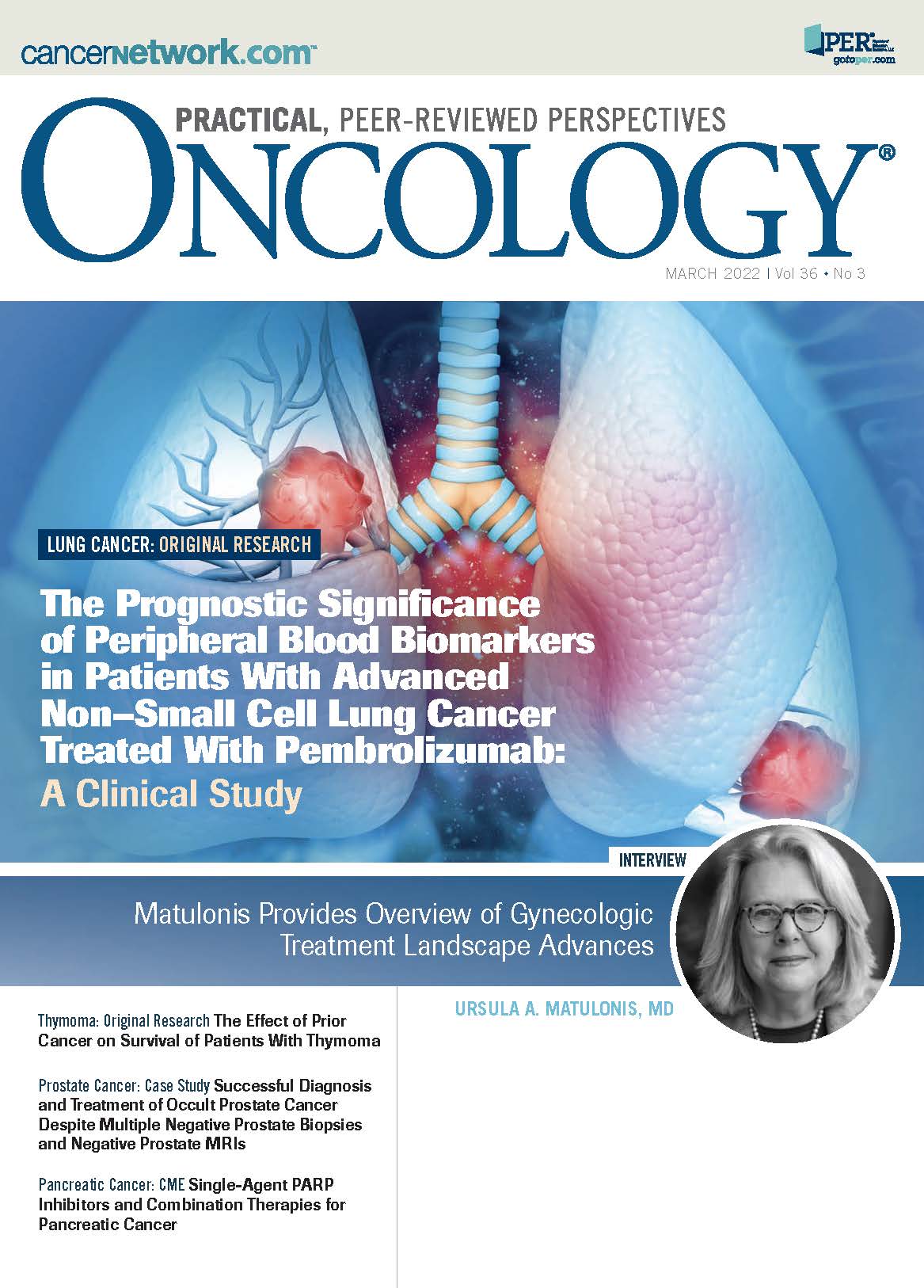The Emerging Value of ctDNA in Colon Cancer Adjuvant Therapy Decisions
In this month’s Letter to the Readers, ONCOLOGY co-editor-in-chief Howard S. Hochster, MD, reviews results of the CIRCULATE-Japan clinical trial that were presented at the 2022 Gastrointestinal Cancers Symposium.
All our cells die, and then they release DNA strands into the blood stream, which today we can detect as cell-free DNA (cfDNA). A small proportion of this cfDNA is due to death and turnover of tumor cells. This circulating tumor DNA (ctDNA) can be measured and identified using deep sequencing technology. Some ctDNA tests use specific exome sequences linked with known tumor-associated antigens, while others use whole-exome sequencing of the tumor tissue to develop “personalized” probes. Many tests are said to detect minimal residual disease, as it is a molecular indicator of disease persistence, akin to measuring presence of Philadelphia chromosome in the bone marrow of patients with chronic myeloid leukemia that is in remission.
One of the most interesting abstracts presented at the recent 2022 Gastrointestinal Cancers Symposium came from the investigators of the CIRCULATE-Japan clinical trial (jRCT1031200006), who are studying adjuvant therapy in colon cancer using the Signatera ctDNA test. Being accrued to the trial are 5200 patients, some of whom are assigned to therapeutic arms. The data presented at the symposium pertained to the 1500+ patients enrolled in the observational arm, entitled the GALAXY study. About 500 patients were excluded either because they were enrolled in the therapeutic trials or had incomplete data; 1040 were evaluable with a week 4 postsurgical blood test for ctDNA (Signatera) and follow-up data. Of the patients in this data set, 8% had stage I disease, 30% stage II, 38% stage III, and 24% stage IV.
Overall, the ctDNA positivity rate at the 4-week timepoint was 18%, which increased with stage (stage I, 2%; II, 8%; III, 23%; IV, 31%). Additionally, reduced incidence of 4-week ctDNA positivity was associated with BRAF mutation and microsatellite instability–high status. Using this one test point, the 12-month disease-free survival (DFS) rates were 93% vs 48% (HR, 10.9; P <.001) for ctDNA negative vs positive status in the entire sample, respectively, and 95% vs 56% for patients with stage II/III only (n = 712; HR, 13.3; P <.001). The expected DFS rates for this group (including about 40% stage II and 60% stage III) would be 70% to 75%, so clearly the ctDNA is an improved prognostic marker compared with standard pathologic staging.
In multivariate analysis, the ctDNA positivity had greatest prognostic ability for recurrence with ctDNA positive status at 4 weeks (HR, 15.3), and other significant factors including BRAF (HR, 5.2) and RAS mutations (HR, 1.8). T stage and N stage were not prognostic; therefore, ctDNA positivity at 4 weeks is a more powerful prognostic tool than is stage. Additionally, for patients converting from positive status at 4 weeks to negative at 12 weeks, the recurrence rate was very low—similar to those negative at 4 weeks—compared with a rate of 50% to 60% for those remaining or converting to positive at 12 weeks.
Another important observation in this study pertained to the benefit of adjuvant chemotherapy. Patients were chosen by the physician to receive treatment or not, so there was some imbalance in factors (96 with adjuvant therapy and 87 without). In the adjuvant treatment group, there was significantly more stage III disease but approximately similar high-risk stage II patients vs no adjuvant therapy. The patients who received adjuvant triplet (folinic acid, fluorouracil, and oxaliplatin) or doublet (capecitabine plus oxaliplatin) therapy had a ctDNA clearance rate of 68%, compared with 10% in those who did not receive adjuvant therapy. The multivariate analysis for recurrence in stage II to IV disease with adjuvant therapy showed a hazard ratio of 5.6 (P <.001) with all other factors not significant except RAS mutations (HR, 2.0). And perhaps even more interesting for the 531 patients who were ctDNA negative at 4 weeks, 214 were given adjuvant chemotherapy and 317 not treated (with imbalance by stage), yet there was no difference in the 12-week DFS rates between these groups (96% vs 95%; HR, 1.3). However, this is an observational cohort without randomization, so these results are certainly not definitive.
In conclusion, large nonrandomized observational studies suggest that, first, adjuvant chemotherapy may result in ctDNA clearance in 65% to 70% of patients at 4 weeks post surgery, and second, those with negative ctDNA at 4 weeks do not seem to benefit from chemotherapy. These studies are not sufficient to establish the predictive value of ctDNA testing, but they are suggestive. Randomized studies addressing this question are required and, in fact, are ongoing, with the COBRA trial for low-risk stage IIA colon cancer (NCT04068103) and the CIRCULATE-US trial for stage III disease, which will open soon (NCT05174169). I encourage all our readers to participate in these important studies.
Reference
Kotaka M, Shirasu H, Watanabe J, et al. Association of circulating tumor DNA dynamics with clinical outcomes in the adjuvant setting for patients with colorectal cancer from an observational GALAXY study in CIRCULATE-Japan. J Clin Oncol. 2022;40(suppl 4):9. doi:10.1200/JCO.2022.40.4_suppl.009

Newsletter
Stay up to date on recent advances in the multidisciplinary approach to cancer.